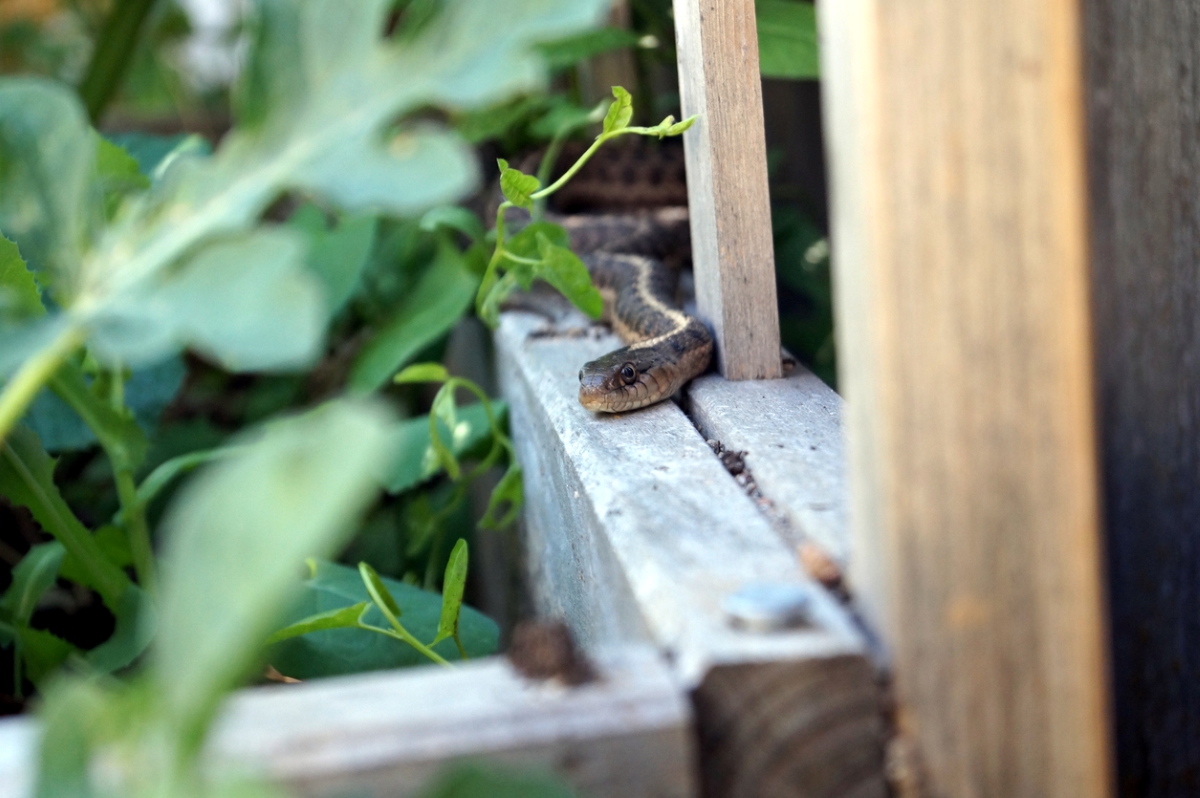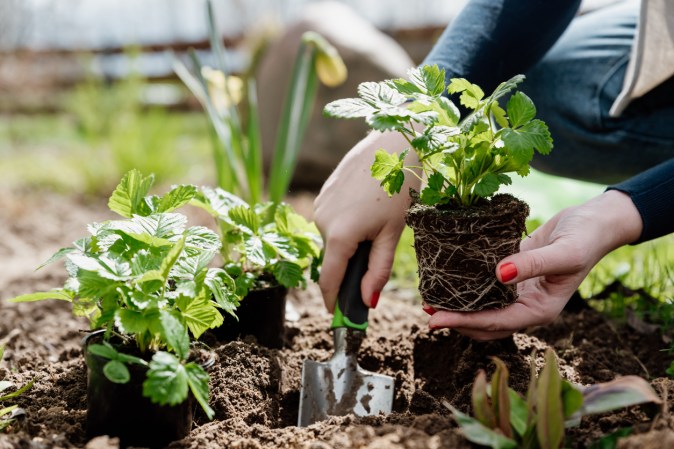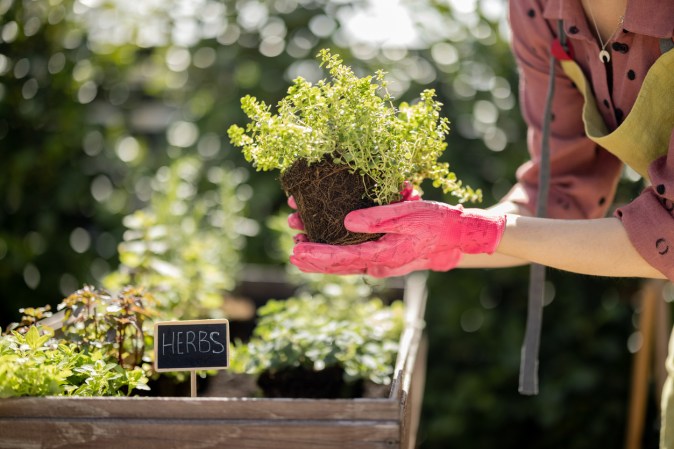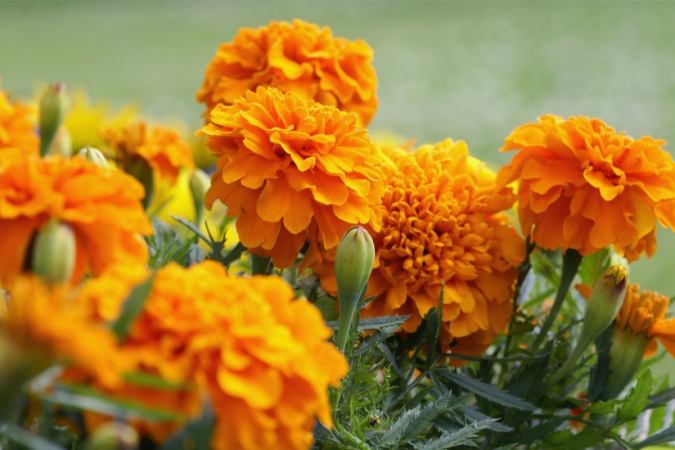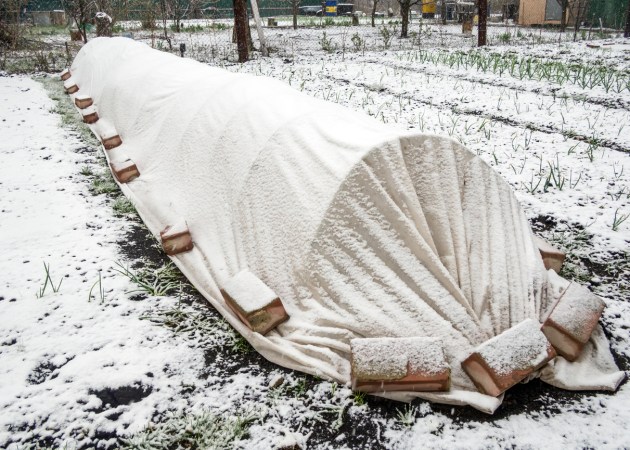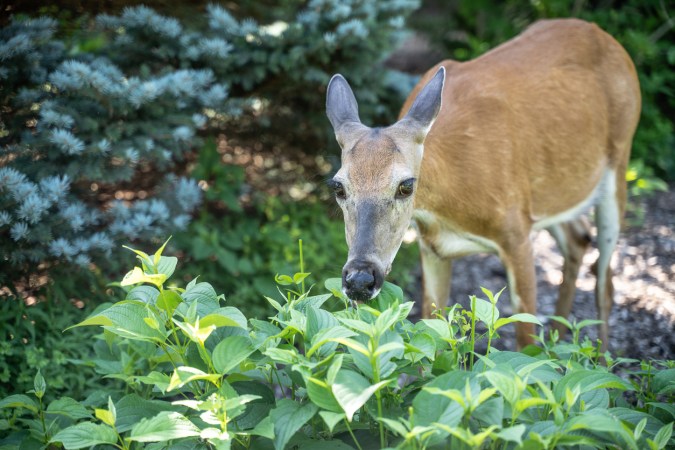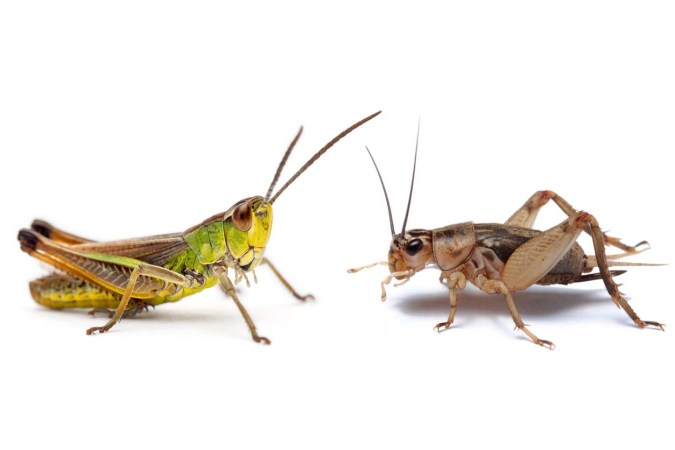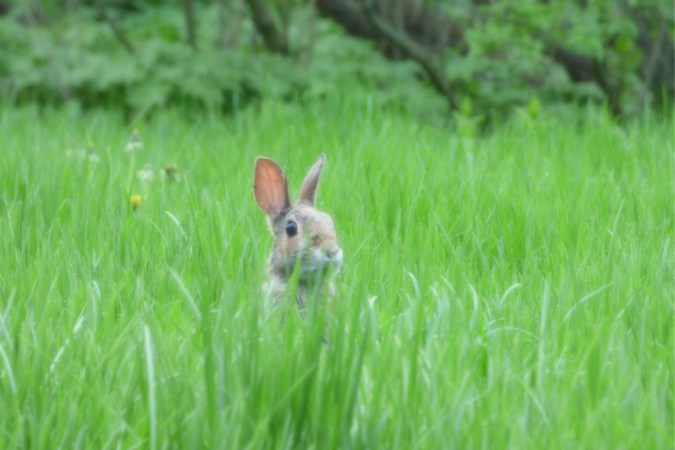We may earn revenue from the products available on this page and participate in affiliate programs. Learn More ›
For anyone who’s ever spotted a snake or snake nests in their yard, the feeling can be a bit unnerving. Though snakes in the garden hunt rodents and other pests that can damage plants or invade a home, not everyone wants a snake in their flower bed. Though not all snakes are venomous or dangerous, there are some species (rattlesnakes, we’re looking at you!) you probably don’t want on your property, particularly if you have children and pets around.
Planting snake-repellent plants in the yard can keep snakes away, and it’s a humane way to let snakes do their thing at a healthy distance from the garden and house. Though landscaping to prevent snakes may be one of the more unusual yard-planning strategies you’ve heard, trust us: Knowing how to keep snakes away is a whole lot better than having to get rid of snakes after they have made themselves at home in the garden or shed.
Snakes have poor eyesight but are able to hunt using Jacobson’s organ, a chemoreceptor in their nasal septum. This can make snakes highly sensitive to smells, which is why most snake-repellent plants have strong scents. Homeowners looking for natural snake repellent would do well to add these aromatic (or otherwise thoroughly unappealing to snakes) plants to their plots.
1. Onion (Allium cepa)
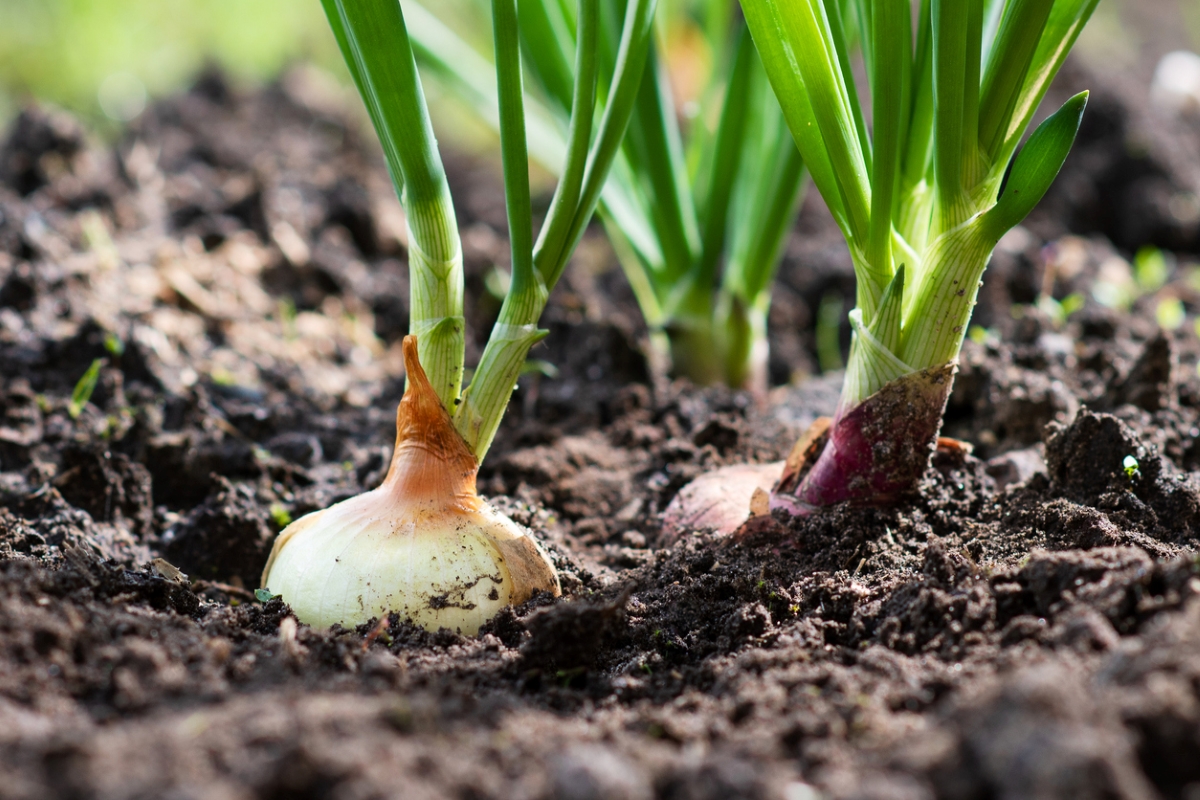
A plant with a strong scent from the underground-up, an onion is just the kind of plant to keep snakes away. With so many varieties of onions, gardeners can choose from among plenty to suit their growing area and taste. Onions are best grown from seeds or sets of small bulbs.
In mild climates, onions can go in as a cool-season crop all the way through spring. In cool climates, plant as soon as the soil is defrosted enough to work. Onions require a lot of sun, so look for varieties that are either long-day (14 to 16 hours of sunlight) or short-day (10 to 12 hours) types. They are a hardy crop, technically a biennial, but most often grown as an annual.
2. Marigold (Tagetes spp.)
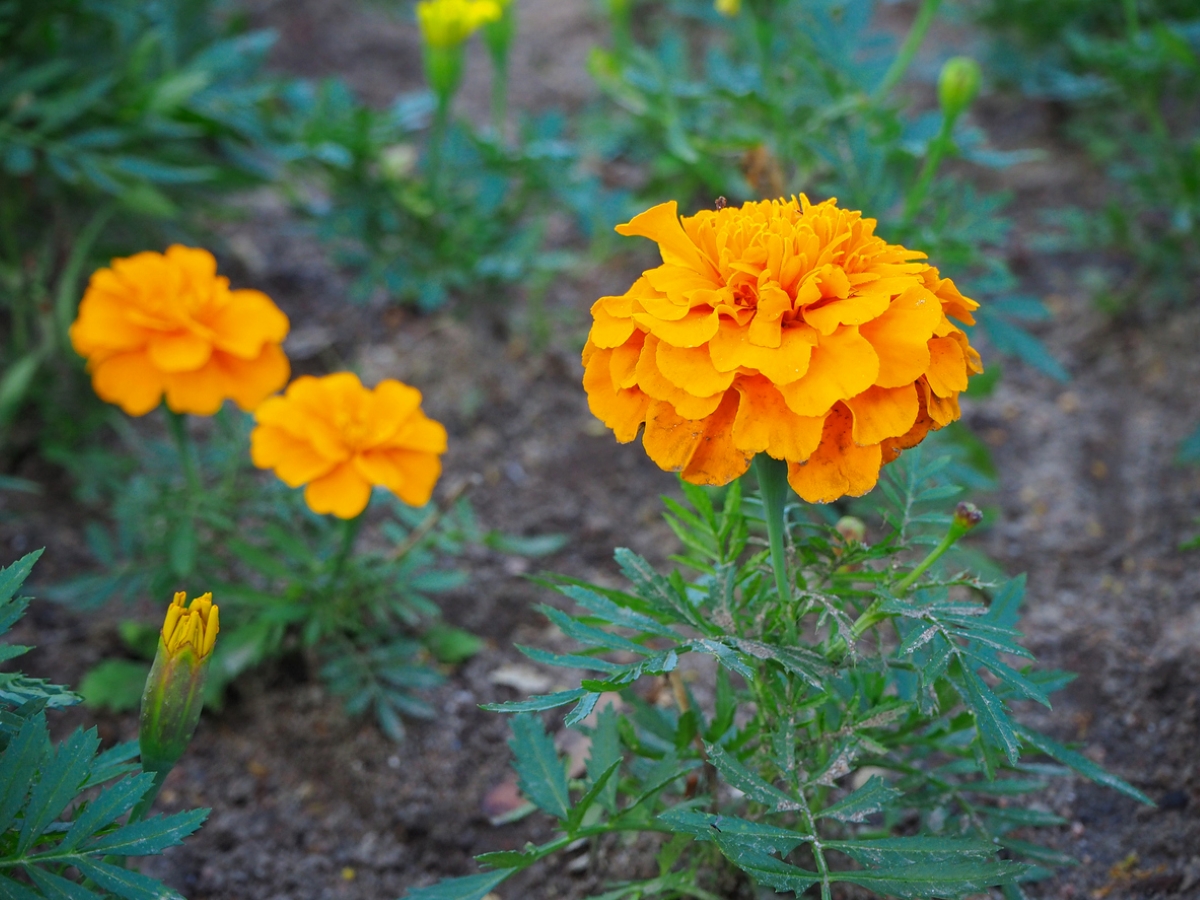
Cheery marigolds do well as borders in garden beds. Along with being among plants that repel snakes, marigolds help deter other common garden pests. A common annual variety, French marigold (Tagetes patula) is incredibly easy to grow from starts or seeds. The flowers thrive into late summer and early autumn, when many summer annuals begin to fade.
Varieties like Inca Gold have puffball-like flower heads and others like Sunrise and Tiger Eye sport a range of colors from deep orange to yellow. Some species of marigold grow as perennials in warm zones These include the mountain marigold (Tagetes palmeri) and Mexican marigold (Tagetes lemmonii). Marigolds prefer full to part sun—shield the plants from the hot afternoon sun.
RELATED: 3 Reasons You Should Always Grow Marigolds in Your Garden
3. Lemongrass (Cymbopogon citratus)
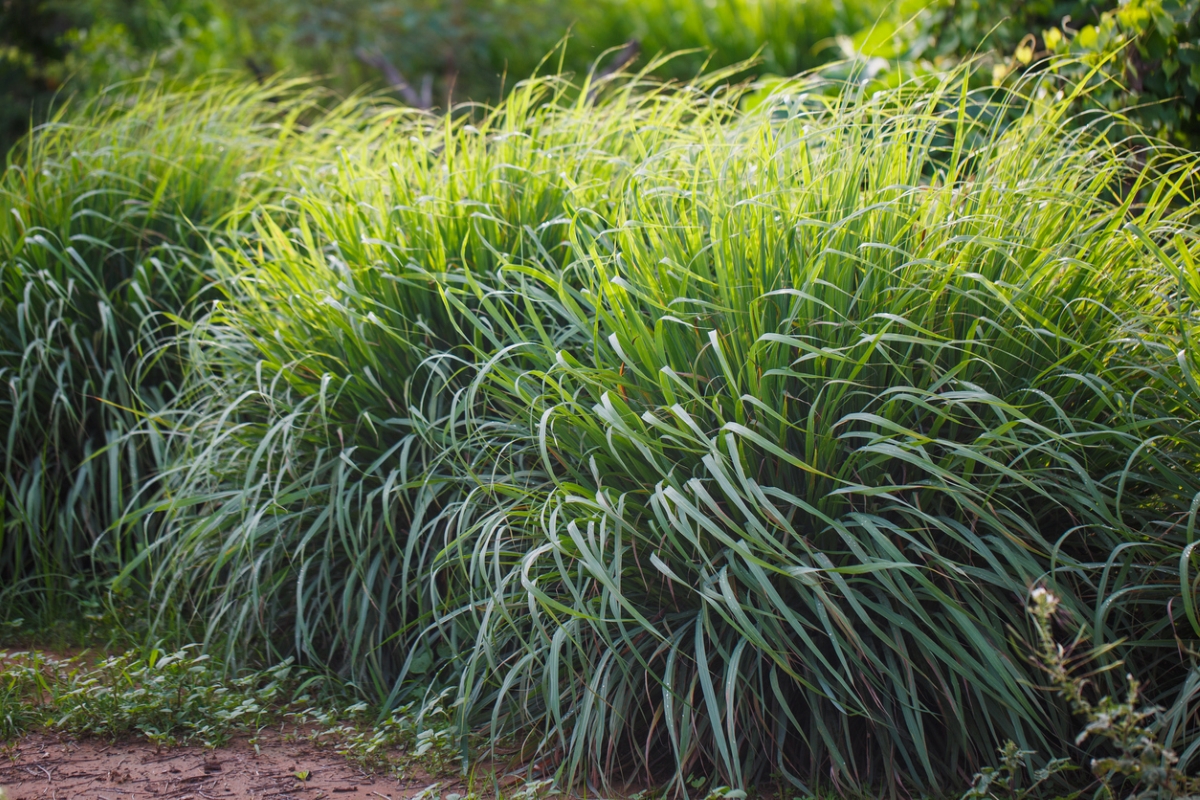
Native to Sri Lanka and South India, this beautiful grass-like herb is a staple in many Asian dishes. It has a lemony-citrus quality that chefs love, but snakes avoid. When planted in the ground, lemongrass can grow in clumps between 3 and 5 feet tall and 2 feet wide. As a result, it is one of the most attractive and effective border plants that can deter snakes. Because it is native to such a warm climate, however, lemongrass is grown as an annual in most USDA zones except 9 to 11. Grow it in an area with full sun and fertile soil where it’ll get plenty of heat.
4. Clove Basil (Ocimum gratissimum)
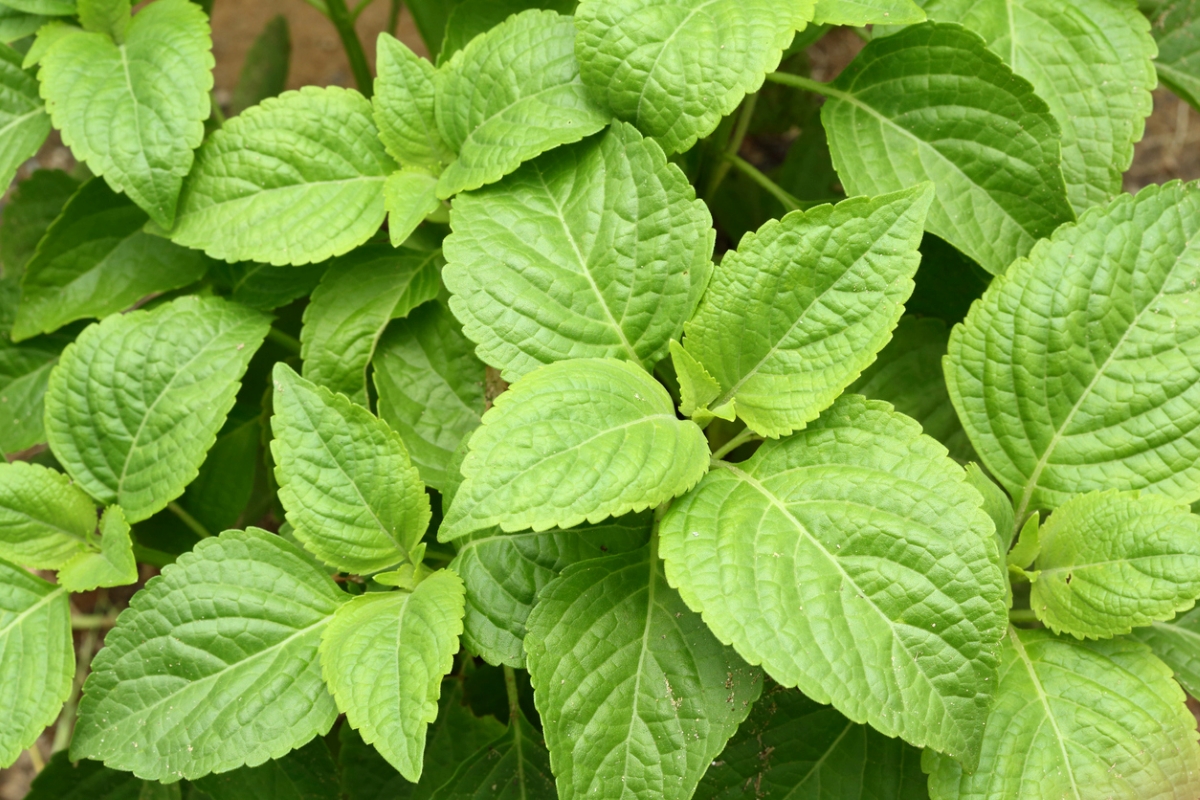
One of the smells snakes hate the most is the smell of cloves. Like all basils, clove basil is strong on scent, but with a distinctive clove-like smell that ranks it as one of the best snake-repellent plants. As a bonus, this basil plant can grow up to 6 feet tall but can be trimmed into a hedge-like shape. It has pretty purple and green leaves with a strong scent, so it is traditionally grown for its essential oils.
Gardeners can enjoy this basil, which is also known as African Blue basil, as an annual in any non-tropical climate. Those living in subtropical or tropical environments should plant it with caution because it can become invasive in those conditions. If clove basil is not available try another variety of basil, which will very likely do just as good a job at driving snakes away. Beautiful, easy-to-grow basil prefers morning sun to hot afternoon sun, which can burn its leaves.
RELATED: 7 Important Things to Know About Growing Herbs Outdoors
5. Garlic (Allium sativum)
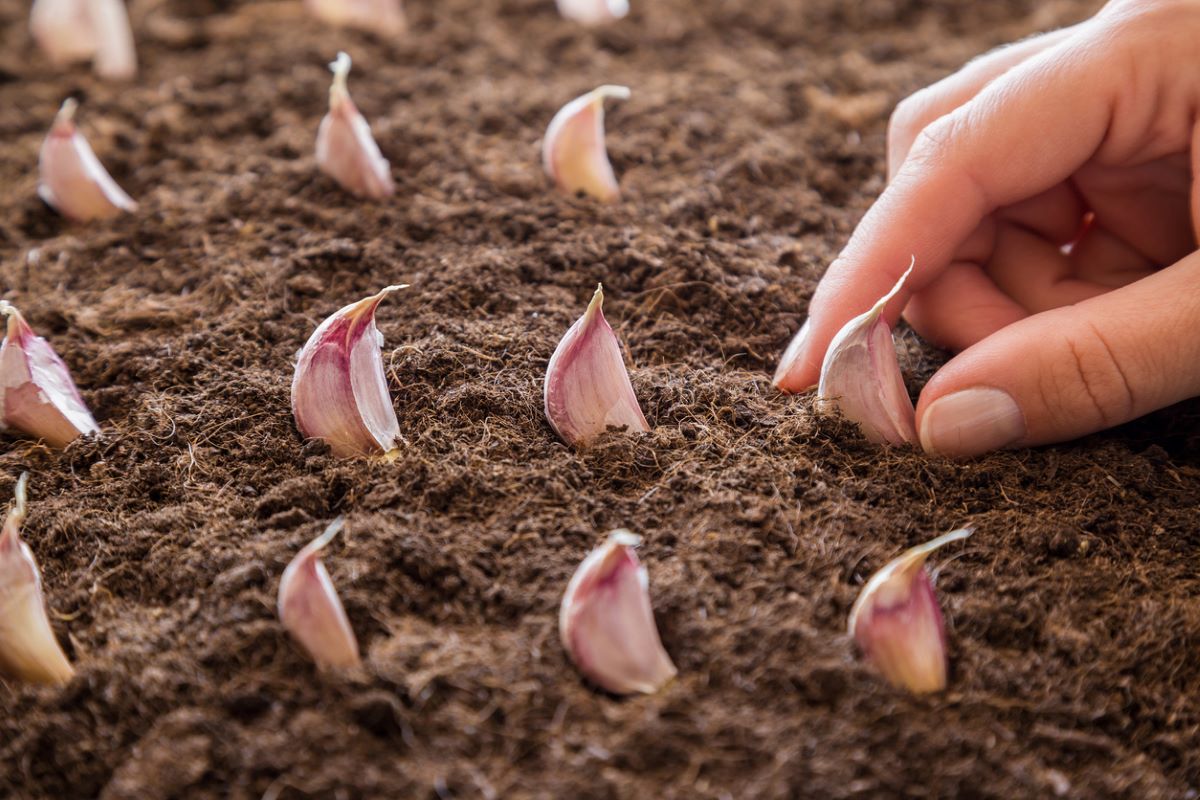
Although it’s the bulb of garlic that flavors so many dishes, even the stems of the garlic plant have its signature strong scent. The essential oils of this plant can rub off on a snake’s body, and it is among the top plants for repelling snakes in the garden. Garlic also deters a host of other insects and garden pests, and the small white flowers it produces can even attract bees.
In areas with mild winters, the bulbs can be planted from October to December. Otherwise, plant garlic bulbs in early spring when the ground is workable. Break a garlic bulb up into cloves and plant then with the tips facing upward. Give the plants full sun and regular water. In most zones, garlic will come back as a perennial herb.
6. Society Garlic (Tulbaghia violacea)
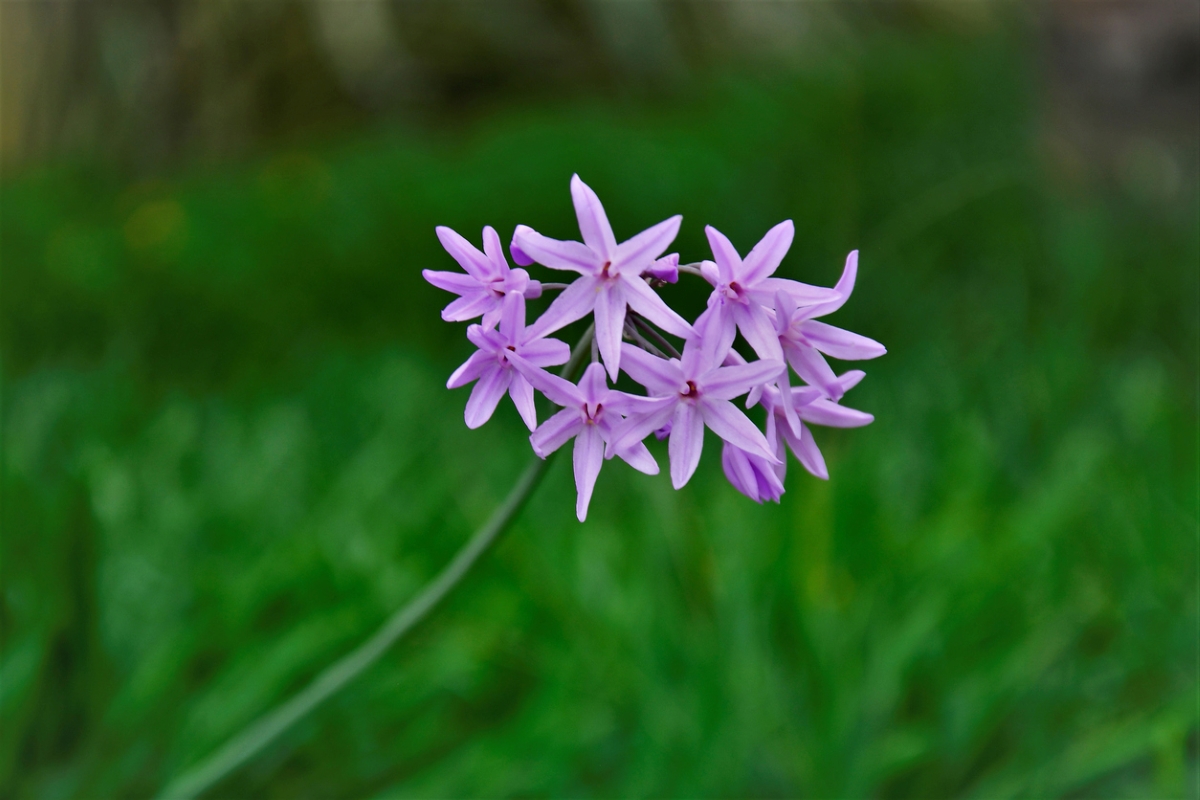
A drought-tolerant perennial in USDA zones 7 to 10, society garlic develops a profusion of rosy, lavender flowers during spring and summer. Though not a true garlic, T. violacea will still keep snakes away because its leaves and flower stems will emit a garlicky odor if the plant is ruffled. Interestingly, the flowers smell like hyacinth and are excellent at attracting bees. Once established, society garlic can take lots of sun and heat without requiring a lot of water.
RELATED: 14 Plants That Thrive Even When Temperatures Rise
7. Flowering Onion (Allium spp.)
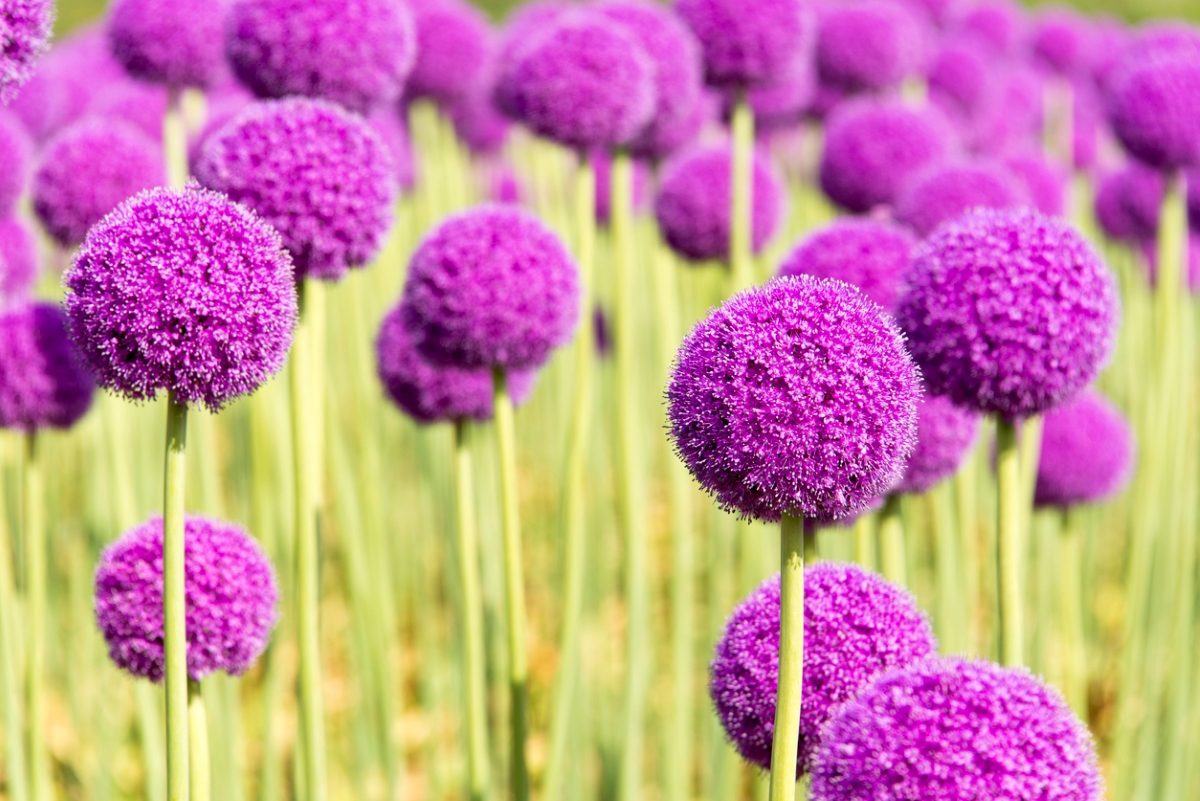
A member of the onion family, ornamental allium has a naturally strong snake-repellent scent. Although the bulbs deter snakes and other pests, the big, lost-lasting blossoms of flowering onions attract pollinators. Alliums are often pink or purple but there are endless hybrids of the flowering onion today.
Get big drama in garden beds with White Giant Allium (Allium stipitatum ‘White Giant’), which produces up to 8-inch wide, stark-white flower globes. For something a little different, try Drumstick Allium (Allium sphaerocephalon), which blooms with oval-shaped flowers in a deep reddish color. Most allium varieties can grow in full to partial sun and are hardy in USDA Zones 4 to 9.
8. Chives (Allium schoenoprasum)
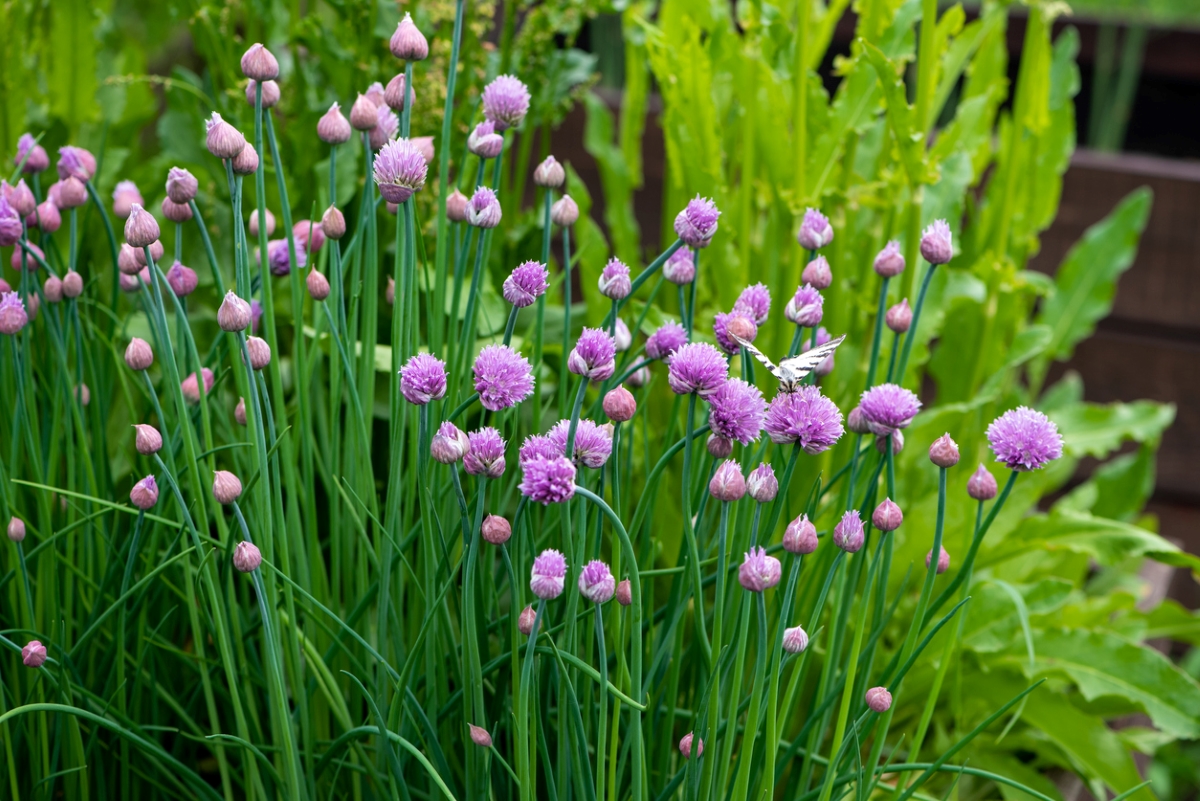
Another relative to onion and garlic, chives are considered a perennial herb and are among plants that keep snakes away. They emit a strong scent of onion, flower in sweet pale purple globes that attract bees, and require significantly less sunlight than either garlic or onion. They can tolerate light shade and do well with constant trimming. Give them rich, composted soil and they’ll last for years to come, even in areas with cold winters.
RELATED: 12 Easy Herbs to Grow on Your Windowsill
9. White Snakeroot (Ageratina altissima)
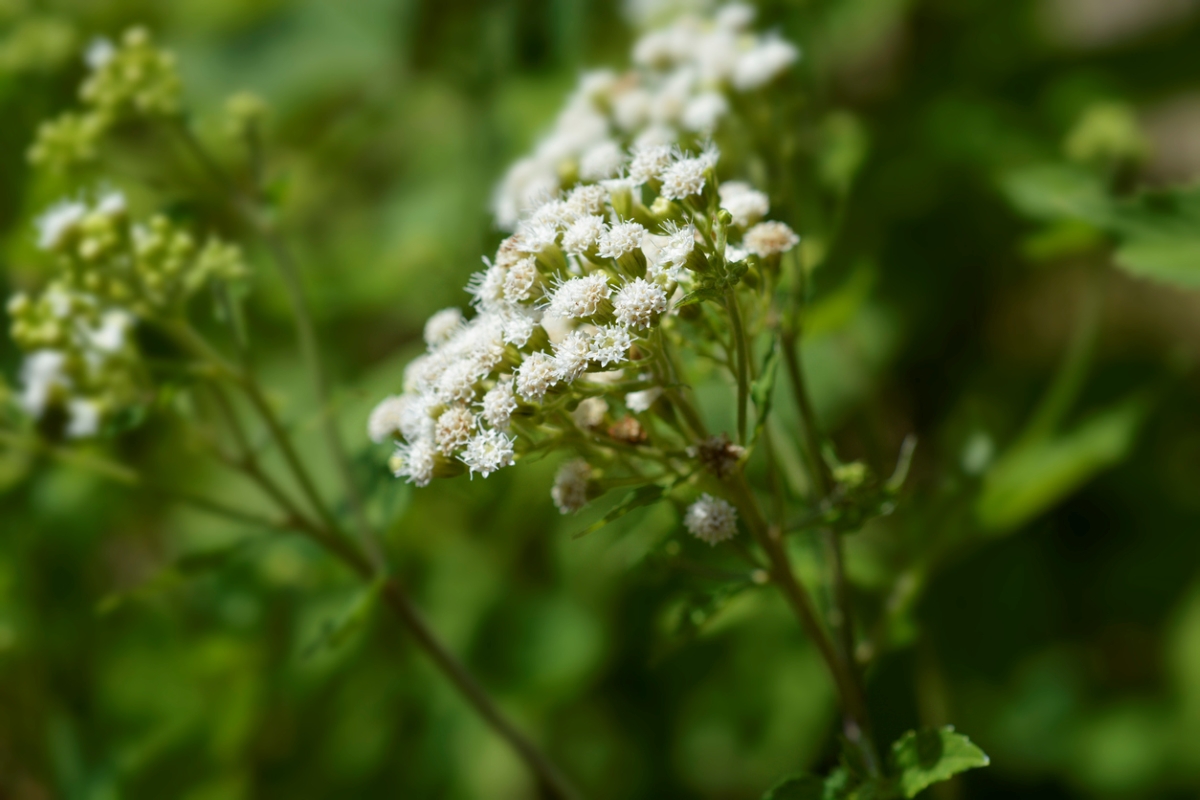
White snakeroot is a North American native plant with bitter leaves and roots. A perennial that can grow 3 to 5 feet in height, it tolerates cool shade and medium to wet soils, and is a good plant for rain gardens or other damp areas in the landscape. It has dark green leaves with delicate white flowers.
A. altissima contains a chemical that is highly toxic to snakes. Used in traditional indigenous medicine to treat snakebite, it can be mildly toxic if ingested and should be kept away from pets. White snakeroot survives in USDA Zones 3 to 9.
10. Mugwort (Artemisia vulgaris)
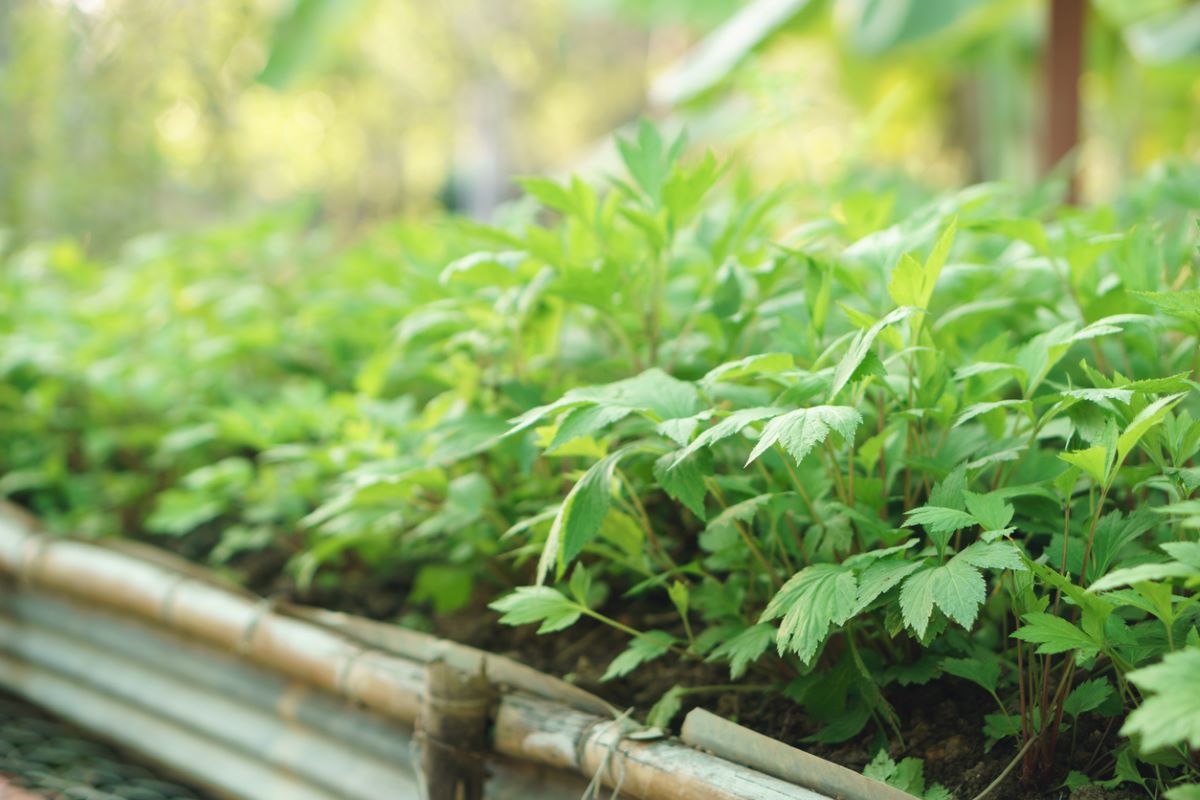
Mugwort is an easy perennial that thrives in USDA zones 3 to 9. It has attractive greenish-silver leaves, a strong scent, and bitter essential oils. Its reddish-colored blooms attract butterflies.
Hardy mugwort grows to 3 to 4 feet high, tolerates nearly any soil condition, and prefers full sun. Its relative, wormwood (Artemisia absinthium), has lacy, silver leaves with yellow blooms and likes similar conditions. Both contain volatile oils that snakes find unappealing.
11. Golden Barrel Cactus (Echinocactus grusonii)
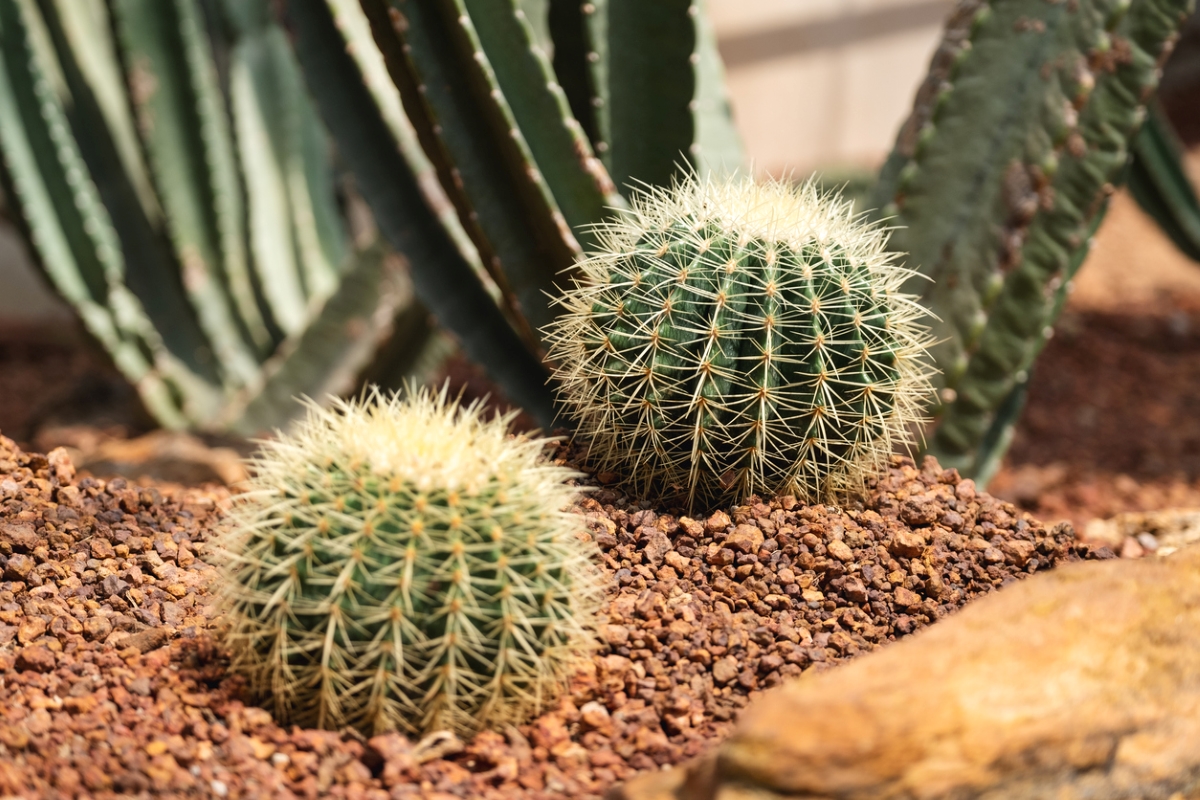
Because of their spikes, most cacti make decent snake deterrent plants, especially in rock gardens. They like lots of sun and are drought-tolerant. Because snakes are low to the ground, a variety of round barrel cactus such as Echinocactus grusonii, which also grows low to the ground, can keep snakes from taking up residence in your yard. The pincushion-like plant can grow up to 3 feet in diameter, and is covered with tons of vicious spikes.
Those who do not live in hot, desert-like climates will have to bring the cactus inside during cold months. Unlike snake plants, these aren’t easy to transplant. Want golden barrel cactus to look seamless in your landscape, but flexibility to bring it in when it turns cold? Plant it in a pot with well-draining soil for succulents, and then plant the pot in the ground so the cactus’s snake-deterring spines are level with the ground. Be sure to keep lots of rocks in the planting hole for good drainage.
12. Snake Plant (Dracaena trifasciata)
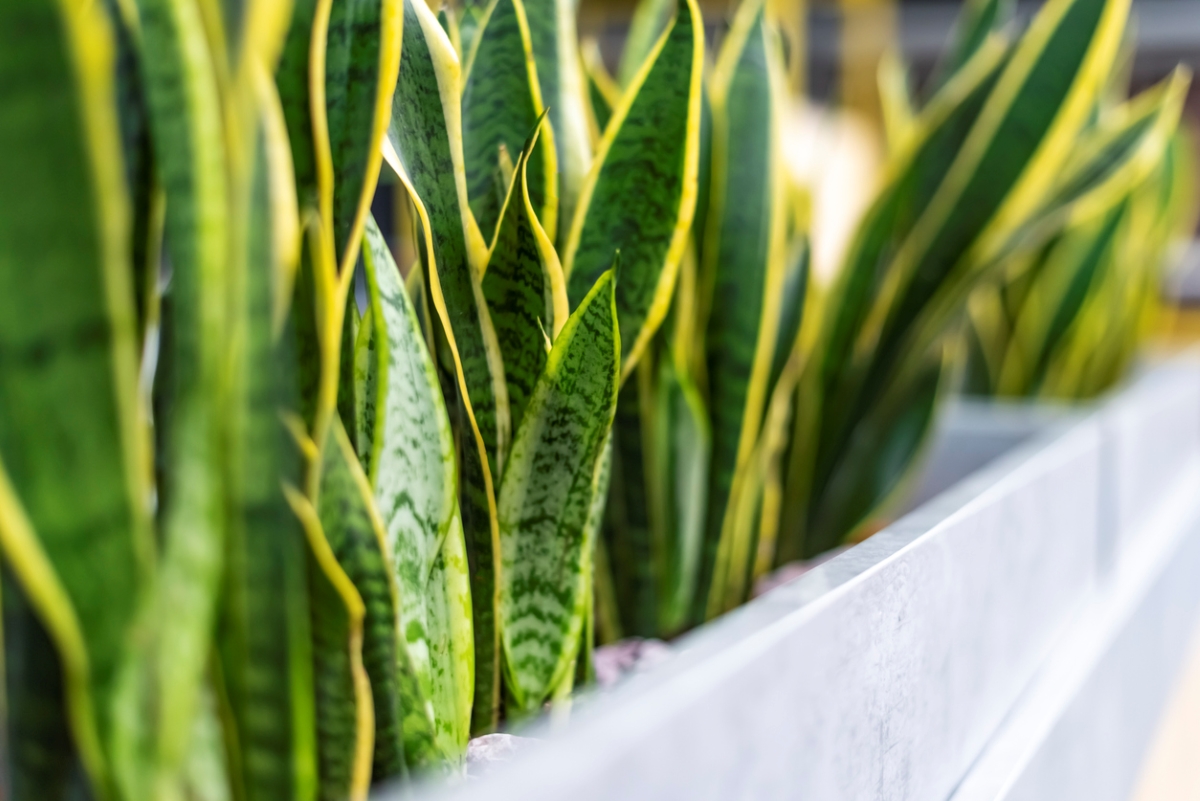
This plant isn’t on the snakes-hate-it list because of a strong odor, but rather because snakes find it poky. The very leaves that look like a snake rising up to ward off predators are sharp and unpleasant for snakes.
There are several attractive snake plant varieties on the market. Most can remain outside in zones with mild winters; in colder climes, gardeners often dig them up and overwinter them indoors. The plant can tolerate low light both indoors and out, doesn’t need much water, and transplants easily.
RELATED: Snake Plant Care: Meet the Ultimate Entry-Level Houseplant

